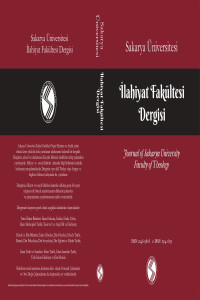Osmanlı'da Huzur Dersleri Kronolojisi
Chronology of the Presence of Sultan of Ottomans
Author(s): Rıdvan KaraSubject(s): Theology and Religion, Islam studies, Qur’anic studies
Published by: Sakarya üniversitesi
Keywords: Tafsīr; Qur‘ān; Verses; Ottomans; The Presence Lessons; Mukarrir (reporter)
Summary/Abstract: The Lessons in the Presence of Sultan of Ottomans in the Ottoman Empire were exegesis classes held during Ramadan under the sultan's chairmanship within the framework of a specific plan and program. These lectures were held during the reign of Mustafa III in m. 1759 and continued until the abolition of the caliphate. In the Islamic scholarly tradition, Huzur Lectures are similar to scholarly gatherings such as muhākemāt, muhādarāt and majālīs. Leading scholars of the period took part in these lectures as mukarrir (lecturer) and interlocutor (discussant). The sultans attended these meetings as listeners, discussants and administrators. The main subject of the lectures was the verses of the Qur'an. After the takrir, the discussion committee asked questions to the mukarrir and made evaluations with the question-and-answer method. The Lessons in the Presence of Sultan of Ottomans are a subject of the science of tafsir in terms of interpretation and discussion of Qur'anic verses. However, the Lessons in the Presence of Sultan of Ottomans have been the subject of disciplines other than tafsir such as history, literature and religious education. Research in the literature has been conducted in the context of Mardin's Huzur Dersleri. However, it has been determined that Mardin's work does not indicate the changes made in the takrir committee with information such as the fact that some mukarrirs could not perform their lectures due to health, death and other reasons. For this reason, in addition to Mardin's work, Huzur Lectures should be analyzed more comprehensively by taking into account the Mashihat-ı Islamiye Sicill-i Ahvâl books, State Archives, invitations to lectures, newspapers and magazines of the period and other documents. In this study, by examining these sources, the data on how many verses the muqarrirs recited during which sultan's reign were investigated in a multidimensional way, and the information that seemed to be in dispute was eliminated. The Lessons in the Presence of Sultan of Ottomans, where the verse(s) recited could not be identified, were not taken into consideration. In this study, a chronology of the Lessons in the Presence of Sultan of Ottomans were created by examining how many verses were recited in which sultan's reign and by whom. The Lessons in the Presence of Sultan of Ottomans, which continued in the presence of a total of ten sultans and one caliph in a historical period spanning nearly two centuries, were subjected to changes in procedures and rules over time. The transition to the Mushaf classified is one of these changes. In this context, by analyzing the documents of Gümülcineli Ahmed Āsım Efendi, who served in the Lessons in the Presence of Sultan of Ottomans for 41 years, we have made predictions about which verses may have been taught in some lessons and by whom. Our research criticizes a few issues related to the relevant field around the following questions: Could the Lessons in the Presence of Sultan of Ottomans be considered as a different interpretation work in the context of the Qur'anic verses in its performance? Did the mukarrir (reporter) masters put the verses independent of each other on the agenda in the recitation of the lessons? Is it possible to talk about a integrated tafsir activity in these lessons, which were held from 1200 Hijri onwards, in which various scholars were supposed to exegete the verses in order according to the order of the Mushaf? To answer these questions, the tradition in question should be examined in detail, and it should be determined what kind of method the mukarrirs (reporters) followed in the selection of the subject verse. Also, it has been observed that many researchers working on this subject are content to cite Mardin's Huzur Dersleri as a source. However, this situation gives rise to other problems. It has been determined that a great deal of information in Mardin's work needs to be criticized. Thus, by not being satisfied with the information here, Directorate of State Archives, meshihat archives, it is thought that the course invitations, newspapers and magazines of the period, and other documents should be investigated in a multifaceted way. In this process, the verses presented and the information related to them were analyzed and the disputed data was analyzed. On the other hand, there is no period-person-based analysis of the verses read either. Through the information that meets this triple criterion, it is foreseen that an important step can be taken to examine Huzur Lectures as the subject of the science of tafsir and to determine which other disciplines they can be the subject of. Based on the results of this research, the information obtained from the sources is examined by making a chronological classification of the verse(s) subject to the lessons.
Journal: Sakarya Üniversitesi İlahiyat Fakültesi Dergisi (SAUIFD)
- Issue Year: 26/2024
- Issue No: 49
- Page Range: 275-302
- Page Count: 28
- Language: Turkish

